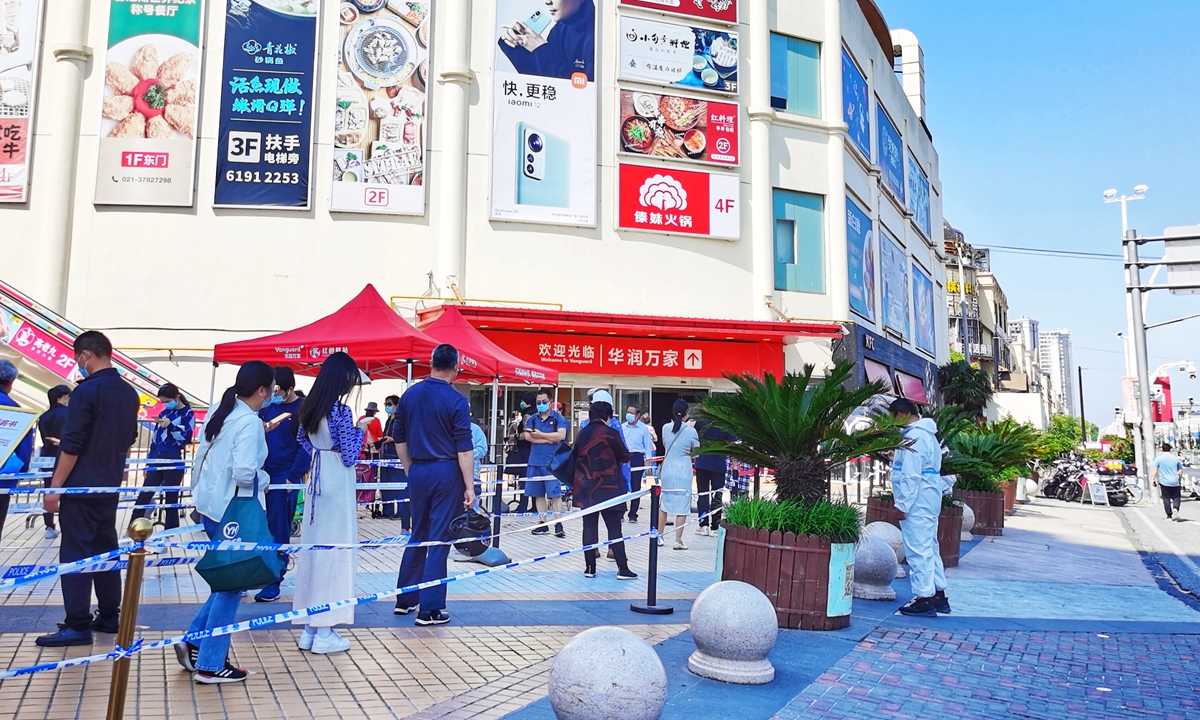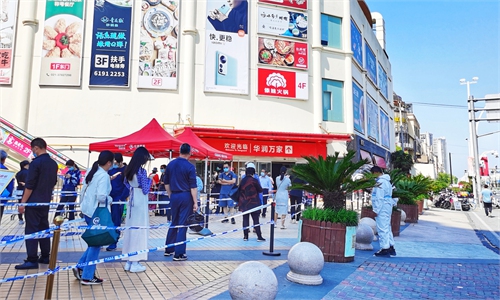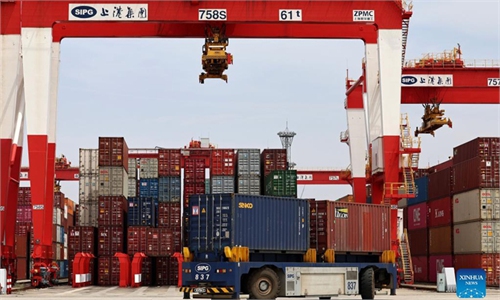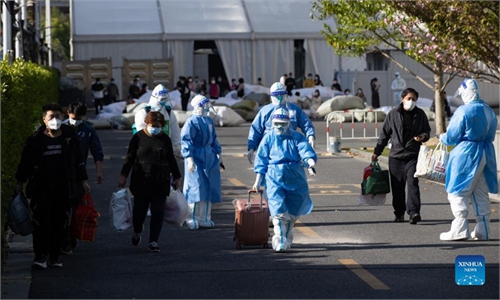
People queue up to enter a supermarket in Songjiang district, Shanghai, on May 6, 2022. Several supermarkets in the district have reopened as the epidemic in the district eases. Photo: VCG
Shanghai residents are seeing the tunnel light after being locked down for more than a month, while the city’s strict pandemic control measures buy time for more vaccinations and bringing down elderly fatalities, local medical experts including Zhang Wenhong, head of the infectious disease department at Huashan Hospital in Shanghai, said in a latest co-authored thesis published in The Lancet.
Researches showed that all of the new viral genomes in the latest Shanghai outbreak were clustered into the SARS-CoV-2 BA.2.2 sub-lineage, a small sub-lineage of Omicron BA.2. Multiple sub-lineages of BA.2 have been characterized, many of which appear to show distinct regional distribution patterns, according to the thesis.
The researchers assessed the potential risk of various mutations on BA2.2 on the severity of COVID-19 and found that the mutations showed no significance in their distributions between severe to critical and mild to moderate COVID-19, suggesting that the observed disease severity is probably attributable to comorbidities.
According to the thesis, although Omicron BA.2 evolves towards less virulent, a higher rate of severe outcomes and considerable mortalities have been reported in unvaccinated people, especially elderly, as being confirmed in Hong Kong.
Though vaccination rate for Shanghai’s 25 million residents has exceeded 90 percent, vaccination among the 5.8 million elderly, aged 60 or above, remains at 62 percent. And only 38 percent of the elderly have received a booster shot.
As of May 4, among the 503 people who died with or from COVID-19, only 25 patients had received at least one dose of COVID-19 vaccine. The vaccination rate for the deceased patients was only 4.97 percent.
The thesis pointed out that if no strict public health measures were taken, such as large scale viral nucleic acid and antigen screening, quarantine of infected cases and close contacts in makeshift hospitals, and lockdown on districts with severe outbreak, the number of severe to critical cases and the resultant death toll could be high among the elderly.
The strict and comprehensive pandemic control strategies in Shanghai are to reduce the number of people infected and to provide early diagnosis and appropriate treatment for severe patients so that the case fatality rate can be minimized, and to buy time for full vaccination coverage, the thesis said.
The researchers said people in Shanghai are seeing a light at the end of the tunnel and the return to normal life and work is proceeding in a stepwise manner, as live-saving efforts are continuing.
Besides, Shanghai's efforts against Omicron are essential for China to control the pandemic in a larger sense. The persistence of dynamic zero COVID in Shanghai and other cities will overcome the insufficient immunological barrier in populations across the country.
The next challenge will be to enhance the communication between the health-care providers and the public to overcome the vaccine hesitancy and make vaccines accessible to all people, the elderly and vulnerable in particular, the thesis said.
Global Times



